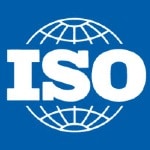Choose an industry you're interested in, then select your audit checklist template
GoAudits has assisted us to move dramatically through our quality control scores, internal and external. Any recommendation or request we made was immediately actioned upon. Highly recommended!
Remus Palimaru
General Manager, Rosewood London

We are now averaging over 96% completion ratios for our GMP audits. With instantly compiled and emailed reports, we get real-time information that allows our supervisors to sign off corrective actions and resolve issues much quicker.
Steve Blaydon
Business Process Manager, Miniclipper Logistics

We needed a full picture of store performance and environment. The GoAudits team was super engaged and adapted the platform to suit our needs. We were able to roll out to all the area managers with ease.
Simon Daley
Head of Retail, Tommy Hilfiger - PVH

Seeing is Believing
Get a live demo customized to your unique needs, or get started with a 14-day FREE trial.
- No credit card, no commitment.


















